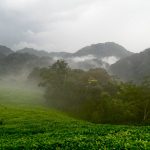Agriculture is Uganda’s leading sector contributing over 44% of the country’s gross domestic product. The sector is the back born of Uganda’s economy providing employment opportunities to over 80% of Uganda’s total population directly and indirectly. However despite the great contributions, agriculture sector was disrupted by civil wars, which hit the country in the 1980’s. This was mainly in the northern and eastern part of Uganda and greatly affected the sector. Presently, peace has been restored and has encouraged the rapid growth and expansion of the agriculture sector.
To address these drawbacks in the agriculture sector, the government has provided support in terms of funding through NAADS programs, providing advisory services to the farmers and supplying them with quality seeds along gardening tools.
Also, several co-operation in agricultural investigations, cattle upbringing and stock improvement, animal disease control, fruit production and preservation, (particularly pineapples) fruit juice production, flower manufacture, management of cattle and game ranches, quality control of foodstuffs (specifically fish for the export market), timber production have all been put by the government to encourage diversification in agricultural products.
What it entails
Agriculture in Uganda involves growing of crops and rearing of animals on small and large scale. Both food and cash crops are grown in different regions of the country for home consumption and sale. Most people with limited land practice subsistence farming in which crops are grown for home consumption. These food crops include sweet potatoes, cassava, beans, peas, maize, Irish potatoes, sorghum, millet and groundnuts among others. Subsistence farming is anon-monetary sub sector in agriculture. Similarly, agriculture is exclusively dependent on smallholder farmers, who generally intercrop coffee with food crops such as bananas and beans
Regarding the monetary sub sector of agriculture, it mainly comprises of additional cash crops such as coffee, tea, tobacco and cotton. Coffee is Uganda’s main export, which has fortified the formation of different coffee plantation farms and projects all over Uganda. These farms include among others the kaweri coffee plantation based in Mubende and is the largest coffee farm, which has made Uganda the worlds leading Robusta coffee producers.
Similarly, Arabica coffee is grown in different areas of the country mostly on the slopes of Mt Rwenzori also known as the mountains of the moon bordering the Democratic Republic of Congo. West Nile in northwestern part of Uganda also grows Arabica coffee.
Coffee exports earn Uganda approximately 20-30% foreign exchange hence increasing Uganda’s rate of foreign exchange earning. However, the increased volatile weather, caused by climate change has negatively affected coffee growing and production. Also, prolonged drought and unpredictable rainfall cause problems hence low productivity.
In 2010, flooding on the slopes of Mount Elgon destroyed 60,000 coffee trees and killed almost 400 people. Similarly, rising temperatures have been associated with the spread of coffee pests and diseases. In Eastern Uganda, for example, coffee leaf rust, a fungus previously only found at lower altitudes, is moving up Uganda’s mountainsides.
Besides coffee, fish is the second largest export earner in Uganda earning the country increased foreign income. However, weed infestation overfishing, and non-compliance of destructive fishing methods have greatly affected fish production.
Benefits Of Agriculture To Local Livelihoods
Agricultural sector has and still provides the highest percentage of employment opportunitiesin Uganda both directly and indirectly. In addition to direct farming, various people are involved in processing industries and other agriculture associated industries. This has greatly helped in eradicating poverty through providing employment and above all food.
Additionally, agriculture is the main source of food for all people in Uganda. In local villages, people depend fully on agriculture for food where subsistence farming is practiced where crop are grown purposely for food. This has assured people of free food, improving their health and living standards as well. Sweet potatoes, millet, maize, sorghum, beans, groundnuts, bananas, Irish potatoes, peas, and some vegetables are the main source of food for Ugandans. Regarding livestock, cattle, goats, pigs, poultry, and sheep are the most domestic animals reared in Uganda.
Furthermore agriculture is a reliable source of energy. This is in form of charcoal and firewood from the cut tree. Also Bio-fuels are some of the latest discovered source of energy made from agricultural products.
The increased poverty levels that hit the country in the 1990’s encouraged the government to initiate the poverty eradication action in 1997. This program has helped in the improvement of incomes through the raising of farm productivity. Similarly, the poverty eradication plan has helped in speeding up the diversification of the agricultural sector hence improved standards of living.
In conclusion therefore, agriculture is the leading sector in Uganda. The sector has improved Uganda’s economy as a whole and the standards of living for the people.








